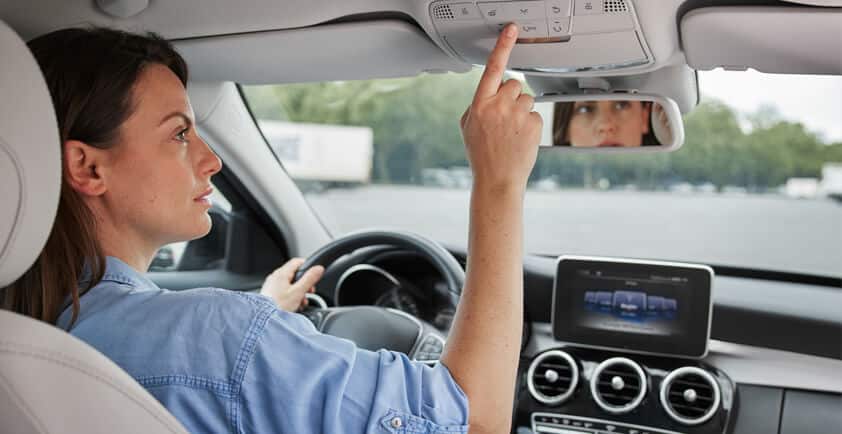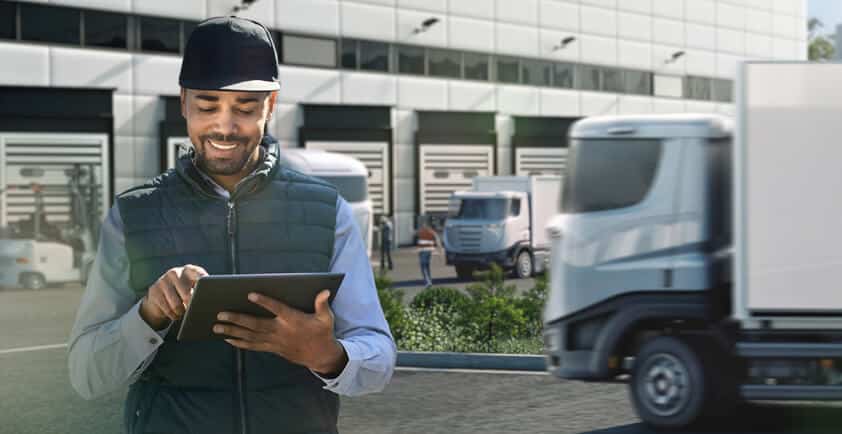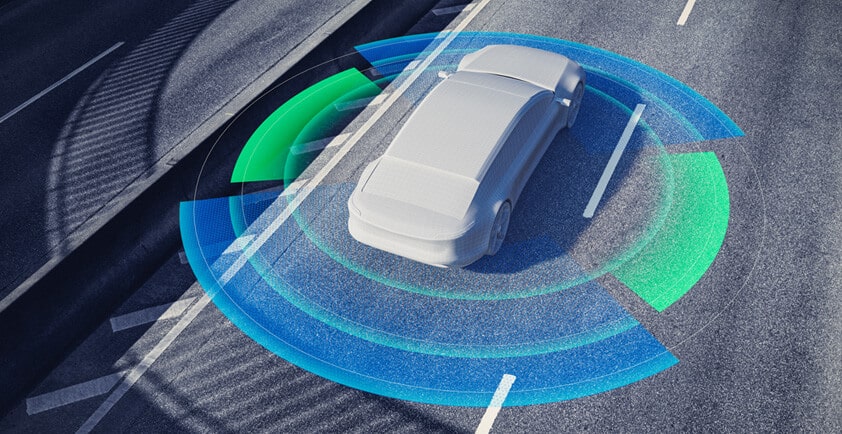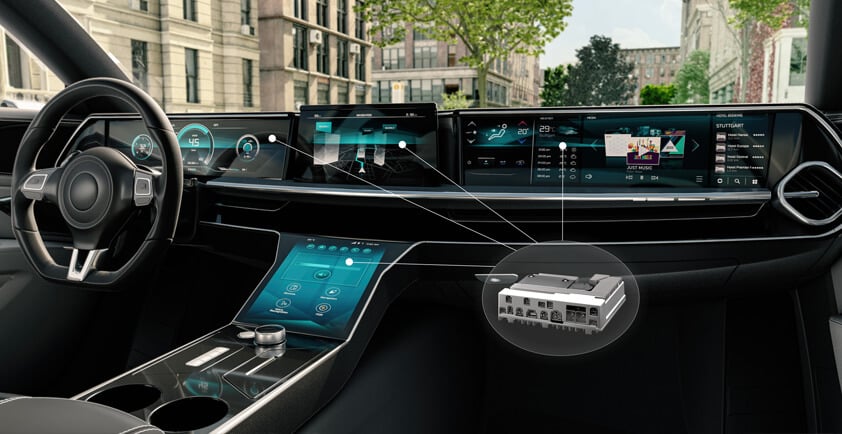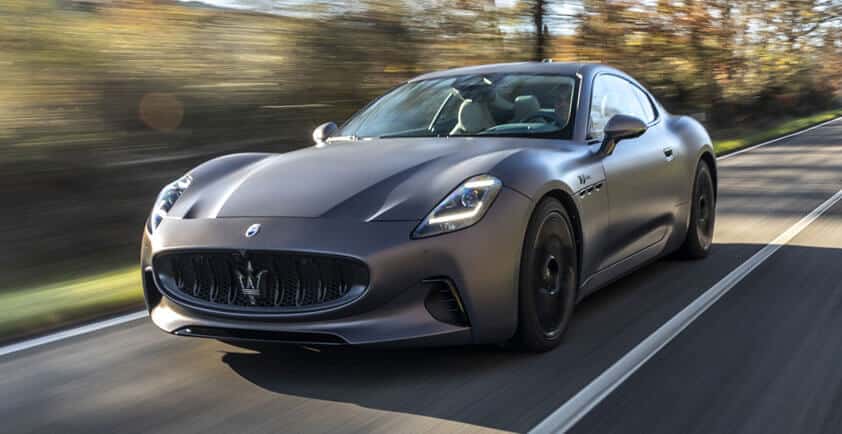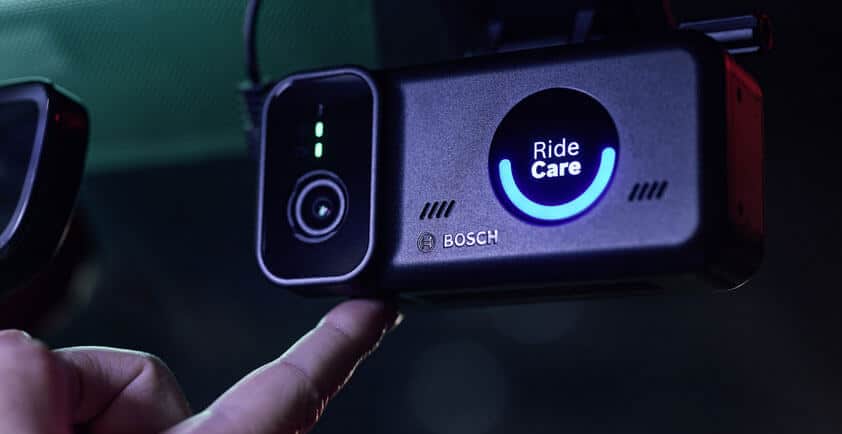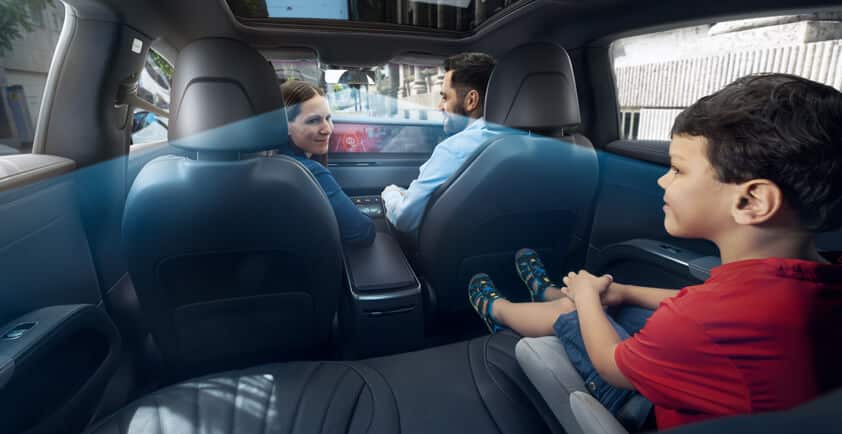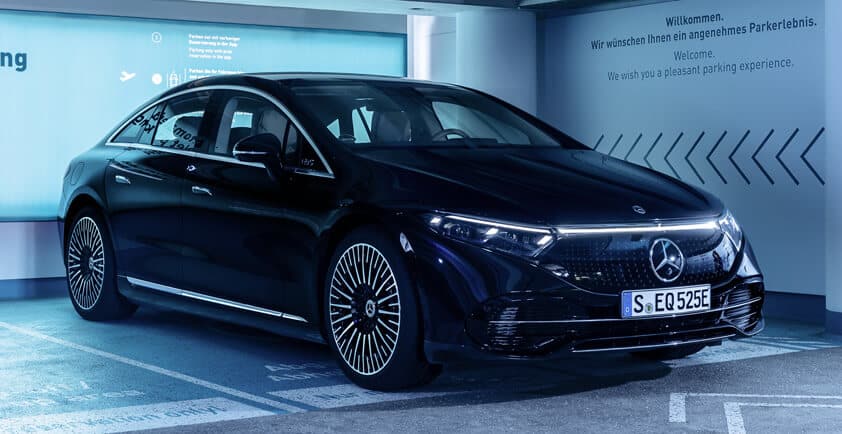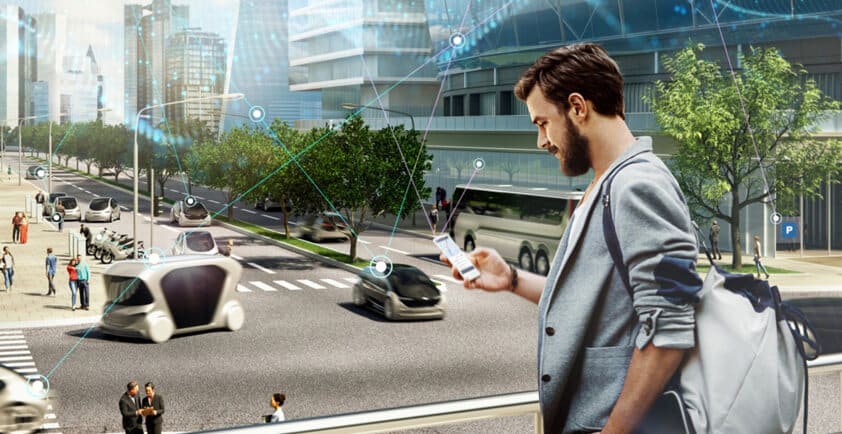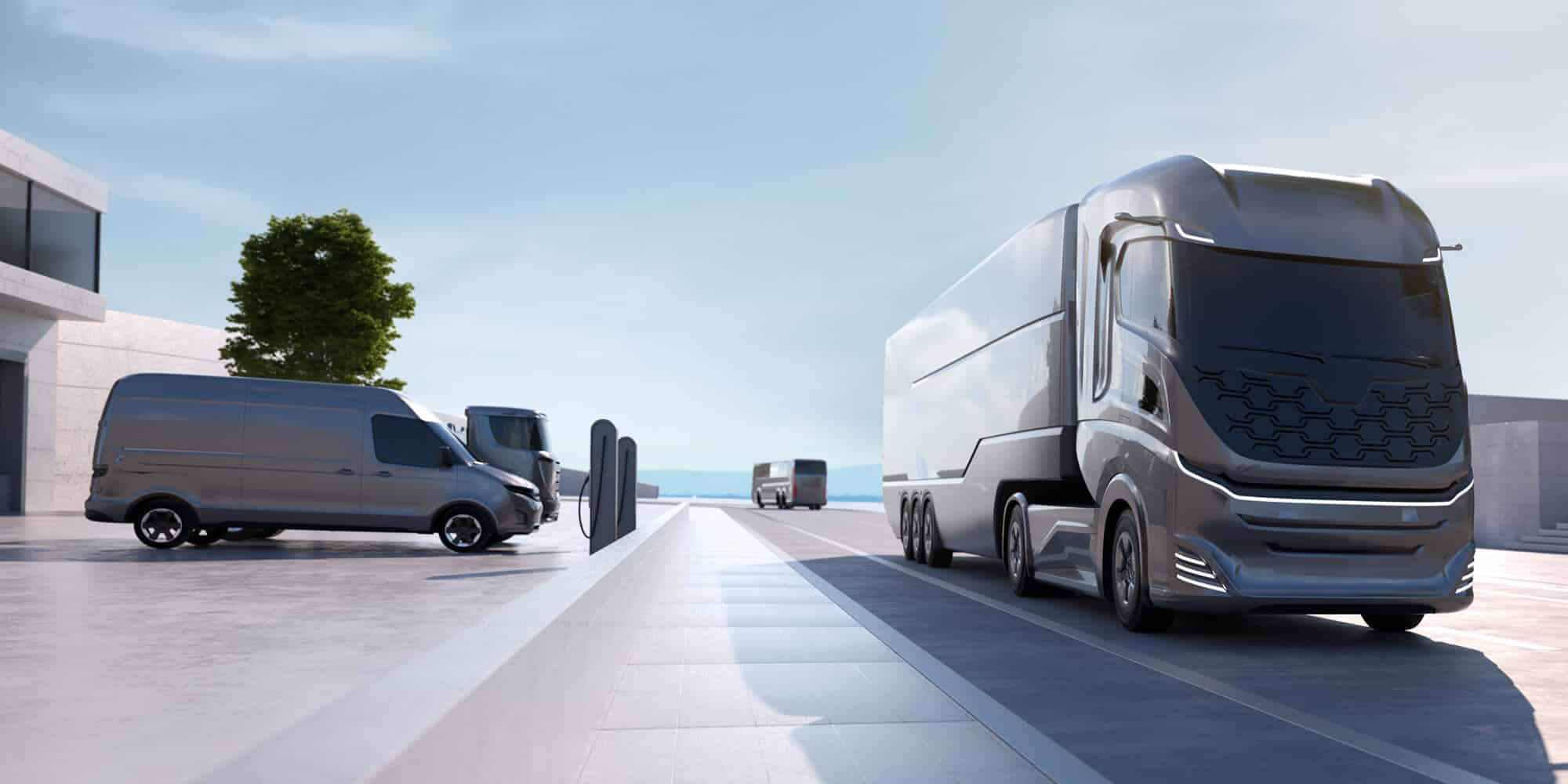
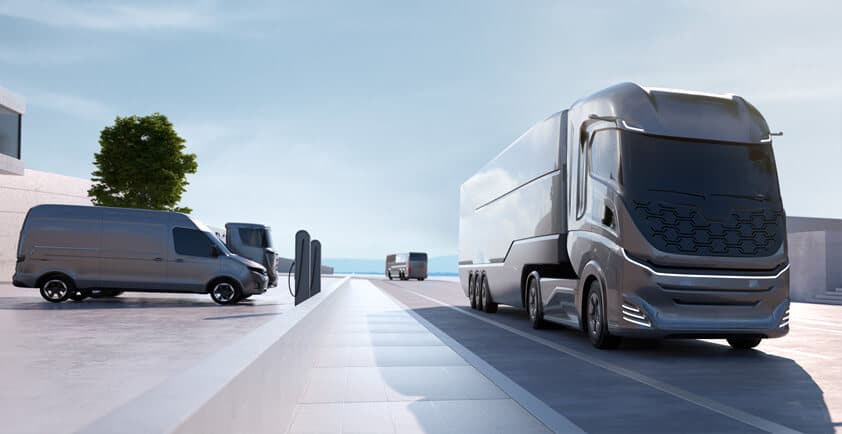
FROM THE FIRST MILE TO THE LAST: BOSCH DELIVERS SOLUTIONS FOR SUSTAINABLE LOGISTICS
Bosch innovations to look out for at IAA 2022
>> Electrical powertrains with batteries and fuel cells make freight and passenger transport efficient and sustainable.
>> Driver assistance systems and automated trucks ensure greater safety and convenience throughout the supply chain.
>> Smart services prevent downtimes and offer vehicle drivers and fleet operators even more transparency and reliability.
Stuttgart/Hannover, Germany – Commercial vehicles keep the economy running. However, an increasing shortage of drivers, a lack of safety in the transport of goods, and more climate action are challenging the industry. Bosch technology for the electrification, automation, and connectivity of commercial vehicles increases efficiency, safety, and reliability in logistics. At IAA Transportation 2022 in Hannover, the supplier of technology and services is presenting its innovations for the freight traffic of tomorrow – from the first mile to the last.
From the first mile: Bosch makes heavy-duty freight more sustainable
Climate action for freight transport calls for a broad technology offensive. Bosch hopes to play a role in realizing climate-neutral transportation for all vehicle classes. To this end, the company is developing a range of efficient powertrains – from combustion engines to battery-electric and fuel-cell powertrains.
Fuel-cell powertrain: Bosch’s eDistanceTruck powertrain solutions are designed for heavy-duty long-haul transport. The heavier the freight and the longer the route, the more attractive a fuel-cell powertrain’s short refueling times and long range become. If the hydrogen used comes from renewable sources, then the fuel cell’s operation is climate neutral, too. Bosch offers not only individual system components, but also complete fuel-cell powertrain systems and solutions for H2 storage systems.
Diesel engine: Modular common-rail injection systems, effective temperature management, and exhaust-gas treatment with double injection – Bosch diesel technology for commercial vehicles helps truck manufacturers further reduce the fuel consumption and emissions of their vehicles and meet future emissions requirements.
Hydrogen engine: Fuel cells are not the only way to power trucks using hydrogen; there are also H2 engines. Bosch is carefully examining the technical issues and looking into the marketability of this technology. Today’s engine and powertrain technologies are already a good starting point. The basic structure of the fuel, air, and exhaust system, along with numerous well-understood system components, can be adopted from existing powertrain solutions. That means there is a great deal of synergy between the hydrogen engine and familiar diesel and natural-gas engines.
Fully electric power steering: ServoE augments Bosch’s product portfolio to include a fully electric steering system for heavy trucks. Because the steering system operates exclusively with electric servomotors, it does not require hydraulic oil or additional pumps. The system’s redundant design supports assistance functions up to and including automated driving. Its function and steering feel can be adapted to each customer’s requirements.
Servotwin: The next generation of the Servotwin electrohydraulic steering system for heavy commercial vehicles combines a hydraulic Servocom steering system with two control units. This means it meets the requirements of automated driving up to and including SAE Level 4. The system offers speed-dependent steering assistance with active response and enables various driver assistance functions.
Rear-axle steering system: The next generation of the electrohydraulic steering system for rear axles is a stand-alone power-on-demand system. It enables the steering of three or more leading or trailing heavy-truck axles. Steering the additional axles, if required, reduces the turning radius and tire wear. Thanks to its compact design, Bosch technology can be adapted to all powertrain types.

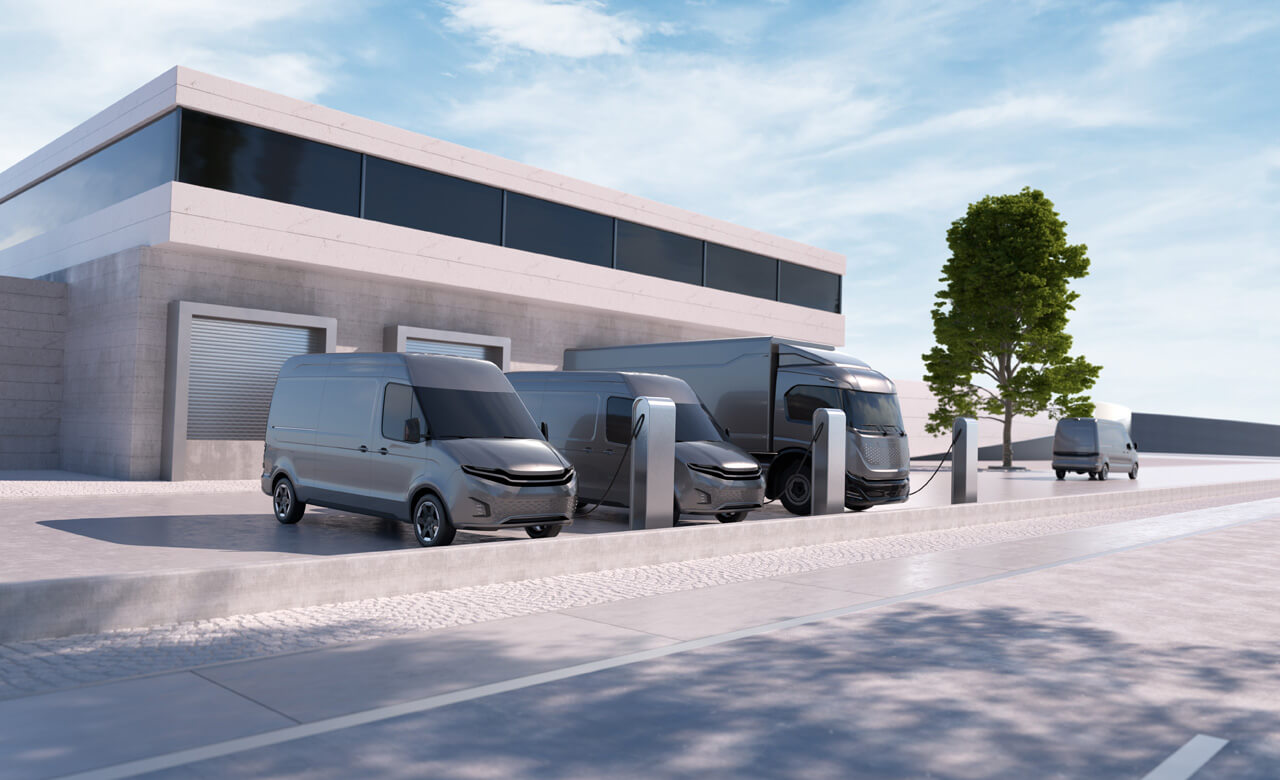
Digital charge planning: A Bosch cloud-based software solution seamlessly integrates electric recharging into logistics planning and service operations for electric-vehicle fleets. Intelligent energy management optimizes recharging costs at depots and logistics centers by smoothing out peak loads, for example. Battery data and other external factors are included in route planning to reduce recharging and thus downtime during the day. Automated subcontractor billing ensures seamless processes and more clarity in operations.
Over the last mile: Bosch gets courier, express, and package delivery services on the road
Delivering packages right to the customer’s doorstep: Bosch is also making freight and passenger transport fit for tomorrow with alternative powertrains for the last mile. In addition, Bosch’s smart hardware is gradually paving the technological way for downtown traffic that has as little impact as possible on residents and the environment.
Electric delivery traffic: Bosch’s eCityTruck powertrain solutions offer efficient, economical technologies for downtown delivery runs. Both the e-axle and the ADM advanced driving module are easy to integrate into commercial vehicles of up to 7.5 metric tons. Electric vehicles with zero local CO2 emissions offer fleet operators the security of continuing to be able to drive in areas with restricted access, such as environmental zones. Depending on the battery design, they enable ranges of up to 200 kilometers, meaning that most delivery routes of less than 80 kilometers a day on average are easily covered on a single charge.
Continuously variable transmission for electric light commercial vehicles: The CVT4EV is a continuously variable transmission with a pushbelt that can increase the efficiency of electrically powered light commercial vehicles by more than 10 percent. Alternatively, a smaller battery saves weight and space. Lower engine speeds and smooth shifting also increase driving comfort.
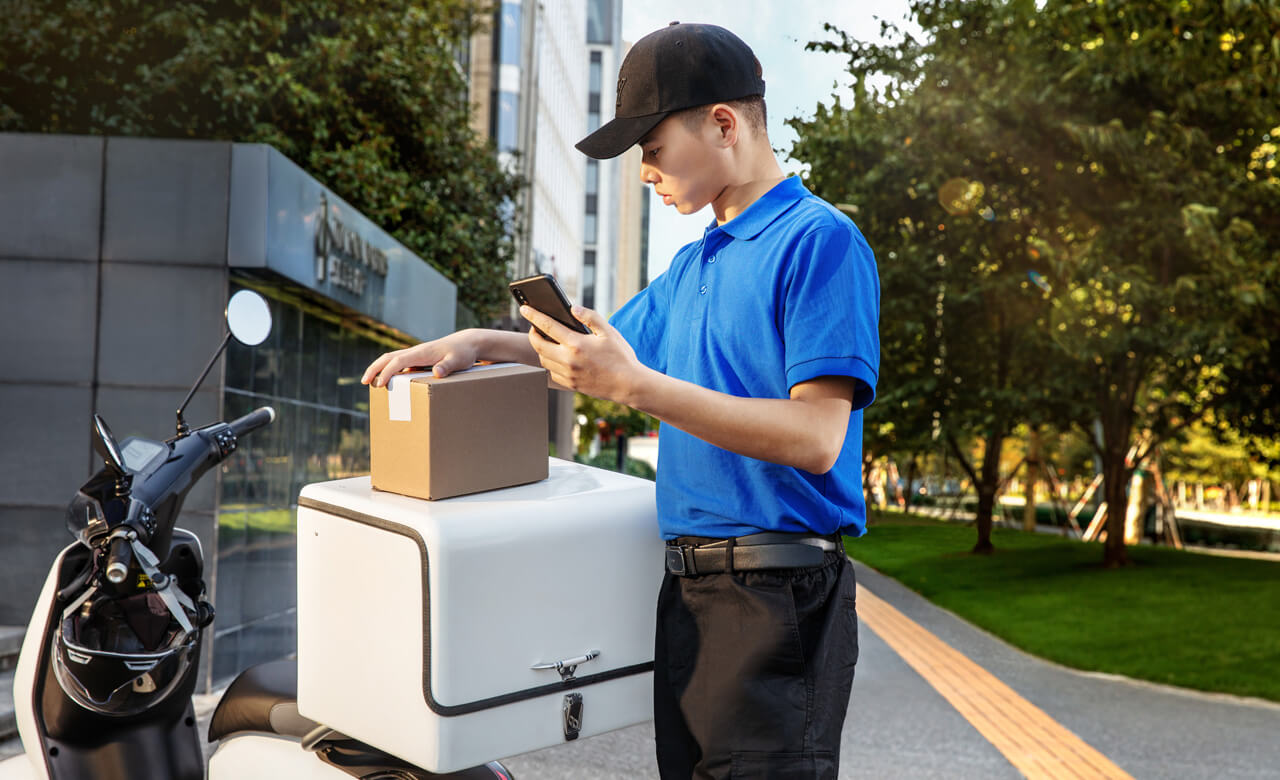
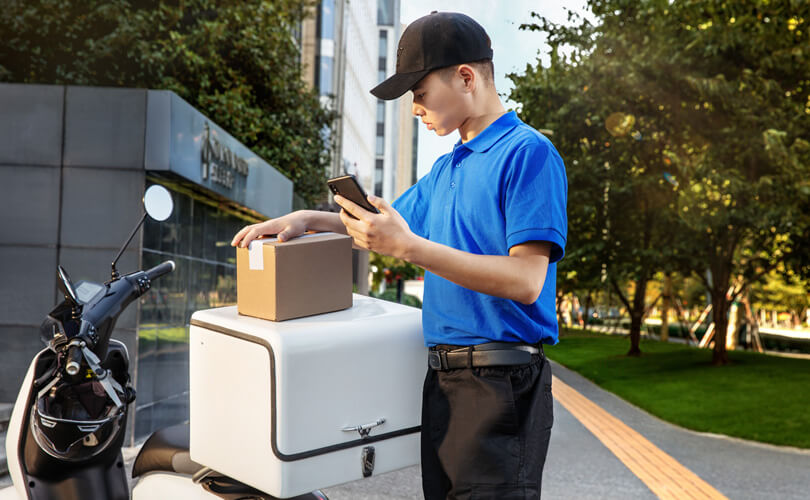
Cargo e-scooter: Urban electromobility is multifaceted and serves a wide range of needs – from sharing to last-mile delivery services. Electric scooters provide fast and efficient transportation of goods in dense urban traffic while helping to minimize traffic noise in downtown areas. Bosch offers powertrains and drive controls that, although designed for different requirements, have been combined and coordinated in a compact drive system.
Urban mobility: Whether for the weekly groceries or delivering light to medium loads – the eCargo Bike can be used in many ways and is increasingly establishing itself as a sustainable and quiet alternative in urban traffic. Now cargo bike riders can also enjoy the benefits of Bosch’s smart system, the latest generation of which – consisting of eBike Flow app, control unit, display, battery, and drive unit – combines e-bike components of high technical quality with the digital world, taking riding enjoyment to the next level. With up to 85 Newton meters of torque, the Cargo Line drive system delivers powerful but natural support at up to 400 percent of the rider’s own pedal power. The new ABS Cargo and Cargo mode ensure greater safety and comfort: ABS Cargo enables safe braking, while the Cargo riding mode allows for a comfortable start, even when carrying a full load.
From the first mile to the last: Bosch technology for logistics
More efficiency, transparency, and reliability are finding their way into logistics thanks to connectivity. Using cleverly analyzed vehicle data, Bosch can, for example, identify anomalies at the system or component level in good time and help fleet operators avoid unplanned downtime.
Software platform for logistics specialists: Bosch’s digital service platform for logistics addresses many of the challenges facing the transportation and logistics industry. At the heart of the software ecosystem for freight carriers and forwarders is a marketplace for digital services from different providers. These services are based in part on data from the truck’s telematics systems and on the transport management software. For example, predictive diagnostics can reduce truck downtime and easily enable the use of services such as booking secure parking or keyless access to vehicles. Bosch is working on this with Amazon Web Services (AWS).
Software-defined vehicles: The Bosch subsidiary ETAS facilitates the development of vehicle services and brings service developers together with their users through its Mobility Cloud integration platform, which includes a development portal and marketplace. In addition, the platform’s over-the-air and data services enable bidirectional data exchange between the vehicle and the cloud as well as continuous further development of vehicle software and functions over the vehicle’s entire life cycle. This speeds up the development and provision of new vehicle functions. Solutions such as CrossLifecycle Diagnostics are already available to manufacturers, fleet operators, and mobility providers in the Mobility Cloud. The cloud-based diagnostics service improves maintenance planning using vehicle connectivity. As a result, vehicle downtimes can be shortened thanks to digital services for monitoring vehicle conditions (remote), vehicle diagnostics, and software updates, as well as data evaluation for failure prediction.
Convenient vehicle access: Fleet Management Xtended Access is the name of the keyless vehicle access system that Bosch is presenting for the first time at IAA Transportation 2022 as a retrofit solution for existing vehicle fleets. This system lets fleet operators and drivers gain efficiency and time. Registered drivers are remotely assigned a vehicle using a web application. Persons authorized in this way can then access their vehicle using a smartphone app within the defined validity period.
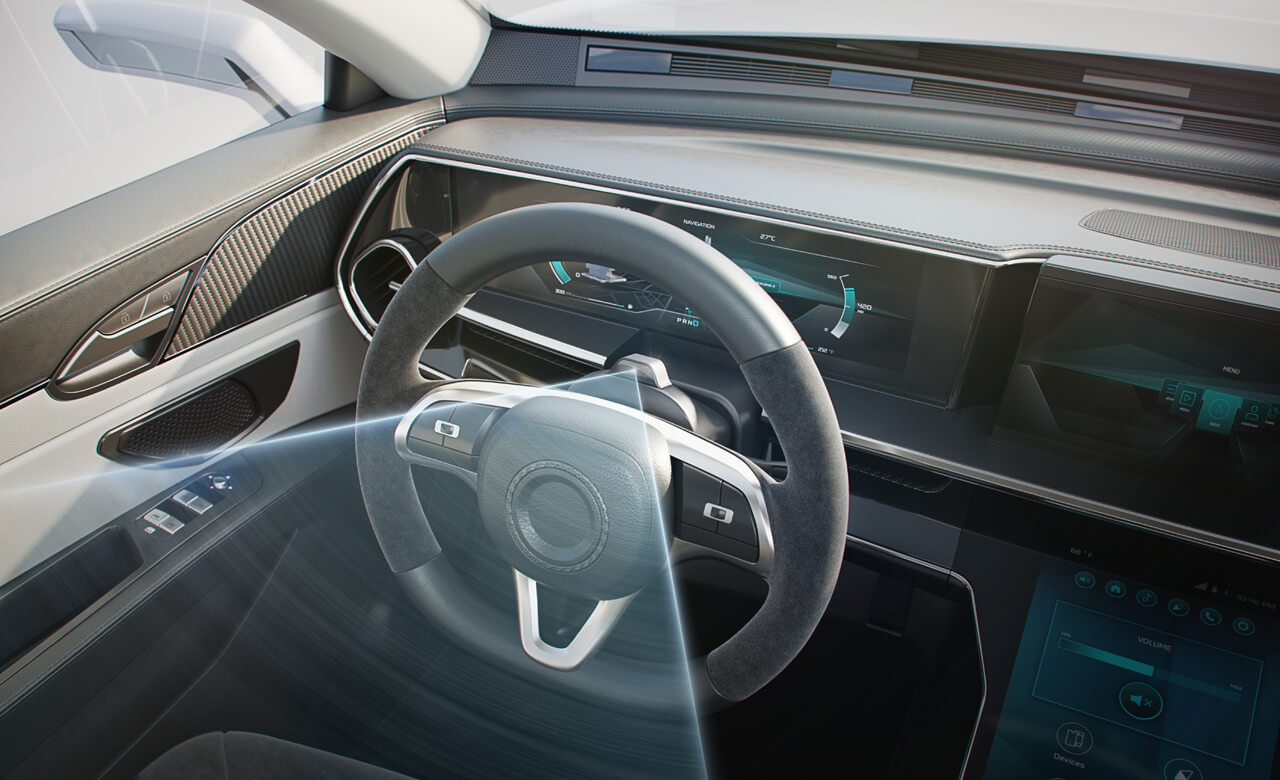
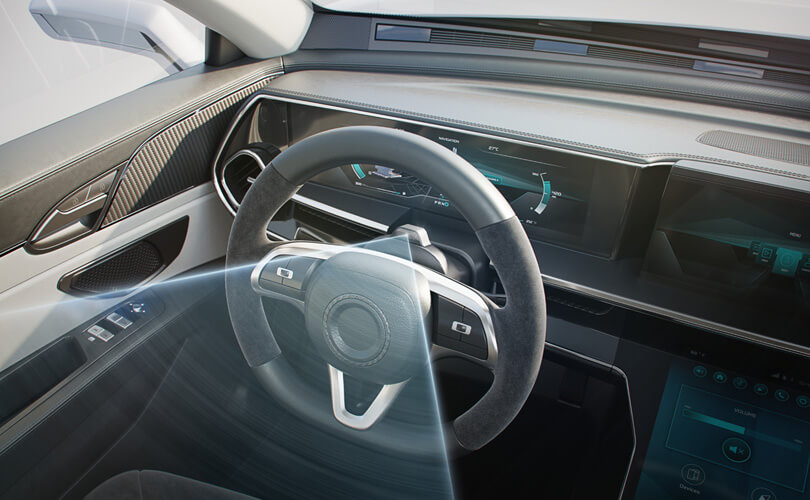
Road safety: The Bosch Driver Monitoring System employs innovative sensor and image processing technologies to increase safety and comfort for drivers and other road users. It detects critical situations such as driver distraction or fatigue at an early stage and warns the driver in good time. According to the EU General Safety Regulation (GSR), in the future all vehicles within the European Union will have to detect drowsiness and distraction. In addition to the safety-related functions, the system enables various convenience features. Facial recognition enables automatic identification of the driver. Based on the stored driver profile, individual comfort settings such as the preferred seat and mirror position, a favorite radio station, or the right language can be set automatically in the infotainment system.
Reliable vehicle return: RideCare Insight is the world’s first one-box solution to reliably detect abrupt driving maneuvers, smoke inside the vehicle, and exterior damage to the vehicle, even when it is parked. For example, it immediately detects accidental damage while parking. A backend-to-backend connection means the mobility service provider or fleet manager receives real-time notifications and information on the location and time of the event for use in further processes such as inspection, damage claims, or repairs. The dashboard also displays information on body condition and wear and tear at the vehicle and fleet levels.
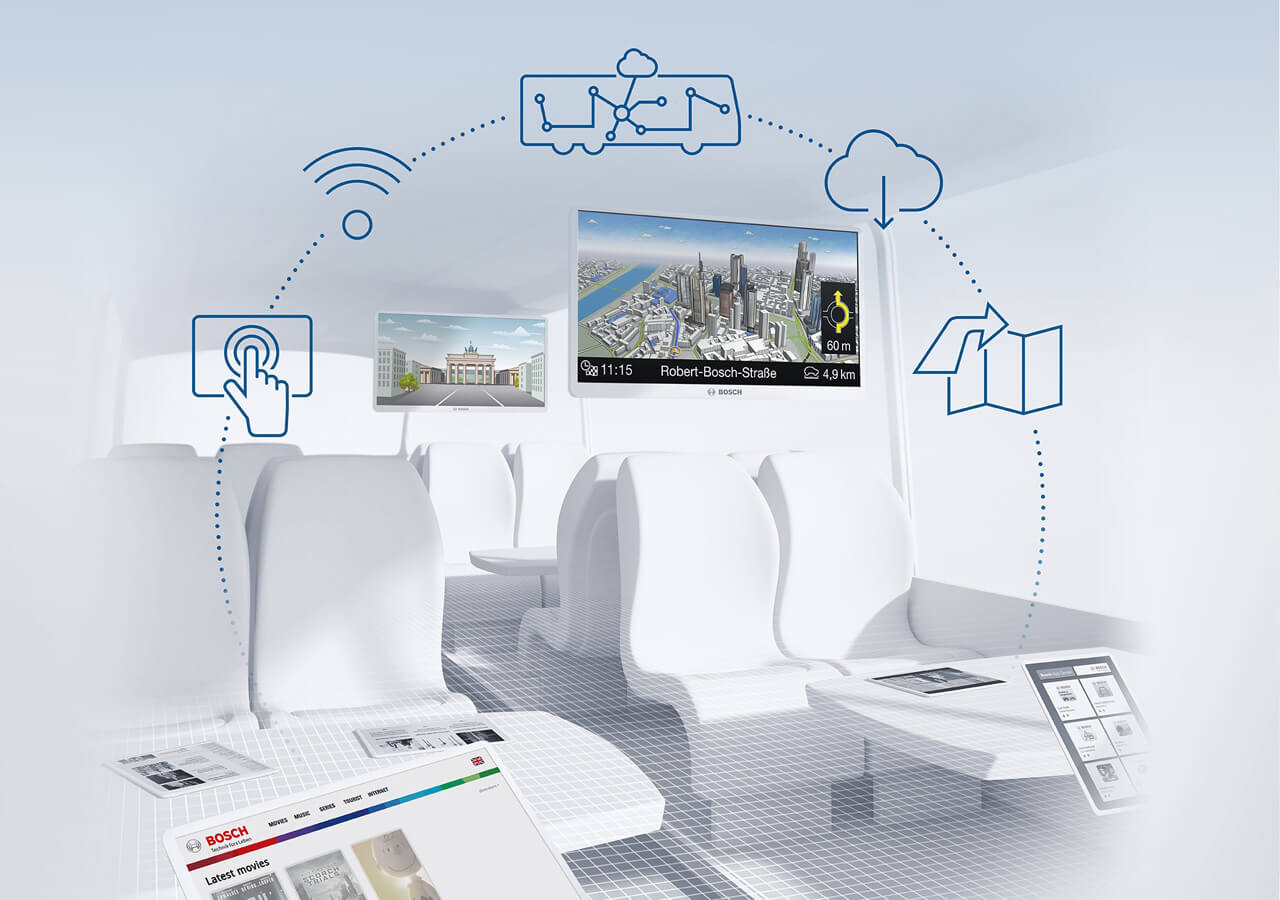
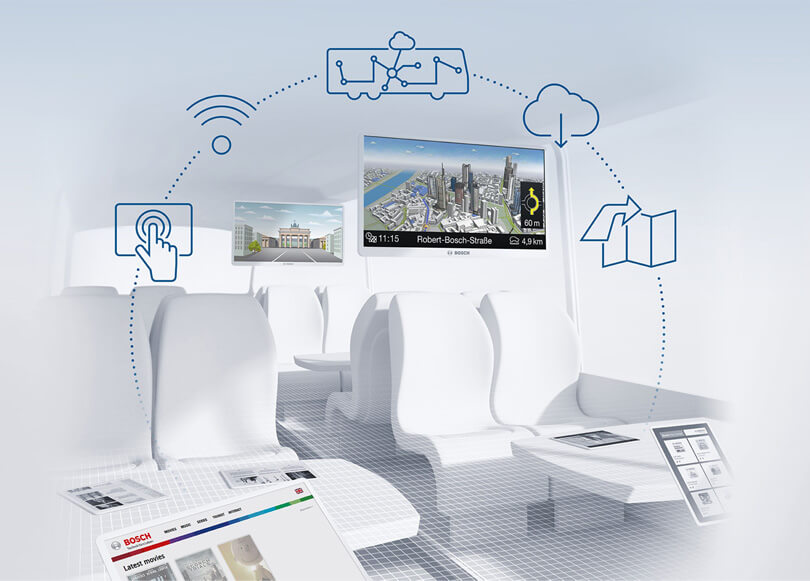
Entertainment center on wheels: The Coach Future Cockpit System and Coach Future Cabin System offer bus infotainment in a class of its own. The perfectly matched components, certified to all relevant OEM standards, and the high-performance signal transmission via Ethernet Audio Video Bridge turn coaches into a digital network on wheels that meets the needs of drivers and passengers alike. With the special coach head unit for commercial vehicles, the driver’s cab becomes a fully connected workplace. In addition to Navigation Data Standard (NDS) map navigation optimized for coaches, the head unit offers a wide range of convenience features, such as a Bluetooth hands-free system, music streaming, and voice control.
Secure data exchange: A prerequisite for numerous smart services that make driving safer and more efficient is for vehicles to be able to communicate with objects in their immediate vicinity and with the traffic infrastructure. The basis for this is the Bosch Connectivity Control Unit (CCU). It uses air interfaces to connect the driver’s vehicle with other vehicles, the infrastructure (traffic lights, for example), and the cloud. The central gateway (CGW) links the vehicle domains and communicates with the outside world via the CCU. It acts as a secure data distributor for communication within commercial-vehicle systems.
Modern vehicle computers: Today’s production vehicles feature several control units to manage and regulate various displays and other electronic cockpit functions. In the future, more and more functions will be brought together in one central location. The Information Domain Computer (IDC) combines the computing functions for infotainment and instrumentation, which were previously separate domains, with other functions on a single processor. This saves cost, installation space, weight, and energy.
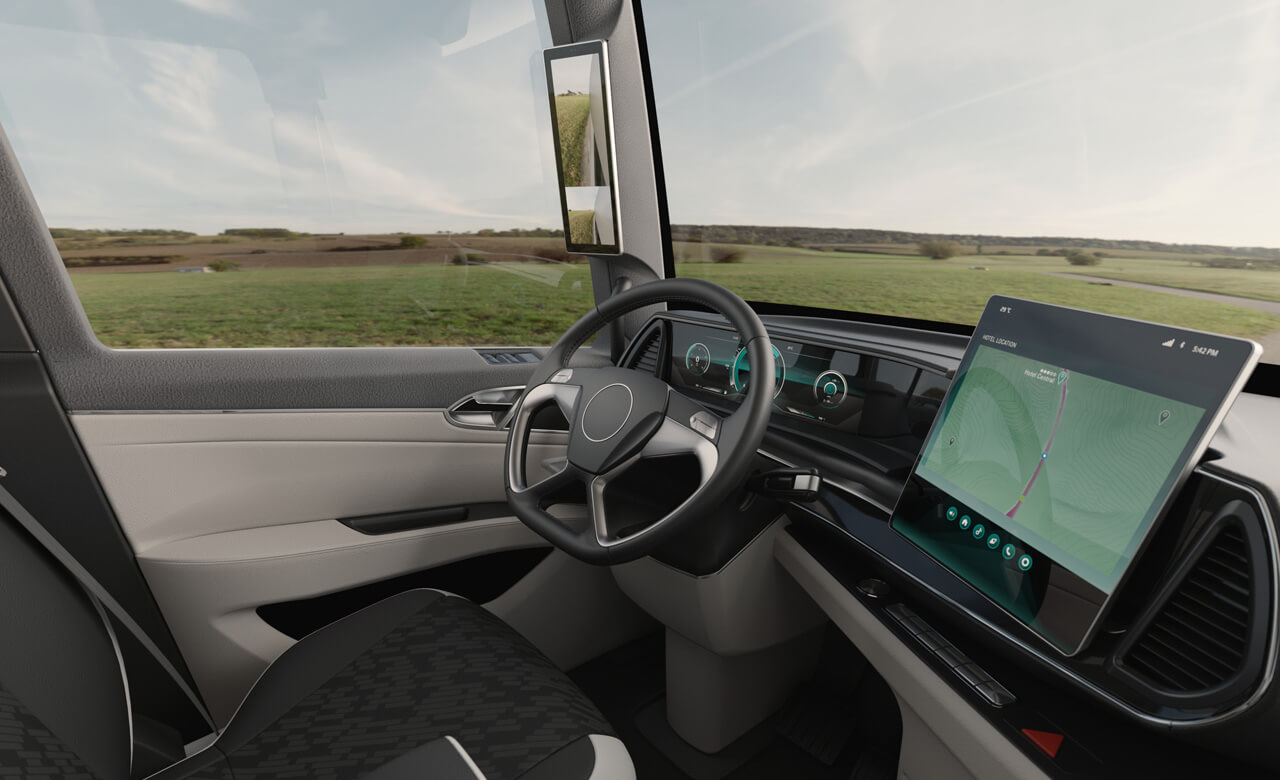
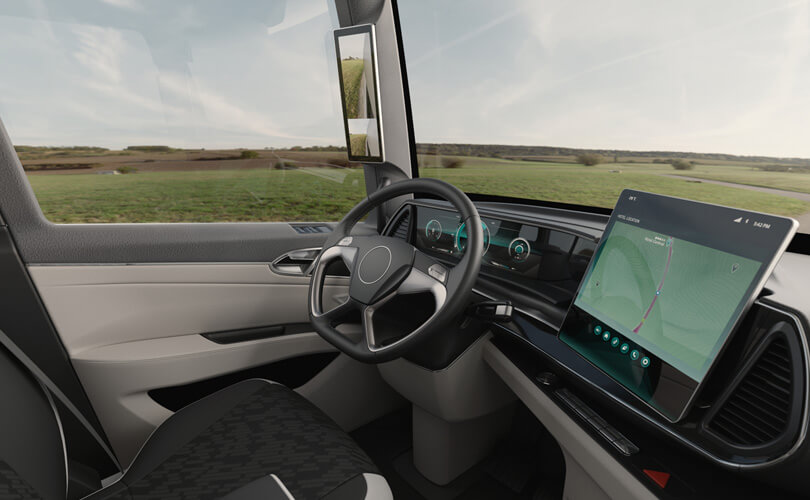
Digital mirror replacement system: Large exterior mirrors on commercial vehicles ensure a safe view of the traffic behind. However, due to their size, they restrict the direct view to the front and sides and create high air resistance. The Digital Vision System, developed in conjunction with Mekra Lang, replaces the large exterior mirrors with two interior monitors and two exterior cameras mounted outside the cab. Its aerodynamic design lowers fuel consumption by as much as 2 percent. At the same time, it considerably improves the driver’s 360-degree vision and reduces the blind spot.
Smart eyes: The third generation of the multifunction camera is tailored to the requirements of heavy trucks. With its unique multipath approach, the camera combines conventional image processing algorithms with AI-driven methods, giving it a key role in high-performance driver assistance systems. It detects and processes objects and structures highly reliably and uses an innovative, high-performance system-on-chip (SoC) for image processing. The camera is designed for safety-relevant driver assistance systems and convenience functions such as the lane-keeping support system, and it also supports object-based functions such as automatic emergency braking. Moreover, it also permits implementation of other helpful functions such as traffic sign recognition. This means the system supports the future legal requirements of the EU General Safety Regulation (GSR) on intelligent speed assistance for detecting speed limits and warning of exceeding them.
Precise object detection: The fifth-generation front and side radar ensures greater safety in the heavy truck segment, thanks to reliable and precise object detection in the area to the front and side of the vehicle. Thanks to the sensors’ large detection range and high angular resolution, as well as their wide aperture, they can detect complex driving situations very quickly, accurately, and robustly. They employ novel chirp-sequence modulation to improve surround sensing by producing more detailed reflections. As a result, both the front and side radar solutions are extremely precise when detecting and distinguishing between objects and people as well as their position, relative speed, and direction of movement – even when visibility is poor. This means that Bosch radar sensors in heavy trucks can ensure greater safety for the driver and other road users by supporting functions such as automatic emergency braking or the future legal requirements of the EU General Safety Regulation (GSR) for a moving-off information system (MOIS) and a blind spot information system (BSIS).

